Miss Tibet is an annual beauty pageant held in McLeod Ganj, India. It is produced by Lobsang Wangyal Productions.

Traditional Tibetan medicine refers to a centuries-old traditional medical system that employs a complex approach to diagnosis, incorporating techniques such as Venesection, Moxibustion, Compression Therapy, Medicinal Bathing, massage and pharmacology that relies on a complex formulary of multi-ingredient drugs that use herbs, minerals, metals, and animal products.

Gaden Tharpa Choling Monastery is a Gelugpa monastery situated at the top of Tirpa hills in Kalimpong, India. The monastery was founded by Domo Geshe Rinpoche Ngawang Kalsang in 1912.
Kyabje Trijang Chocktrul Rinpoche is the current tulku of the third Trijang Rinpoche, and succeeded Trijang Lobsang Yeshe Tenzin Gyatso. Rinpoche is the current principal throne holder of Shar Gaden Monastic University in South India, Karnataka, and the spiritual director of the Trijang Buddhist Institute in Northfield, Vermont.
Khensur Denma Locho Rinpoche also known as Lobsang Oser Choying Gyatso, was a Tibetan incarnate lama, or tulku, of the Loseling College of Drepung Monastery. An expert on Yamantaka and Vajrayogini, he is considered an incomparable luminary of Je Tsongkhapa's lineage, is renowned as a holder of the Tantric lineages, a master of the Tantric yogas, and the lineage holder of Ling Rinpoche.
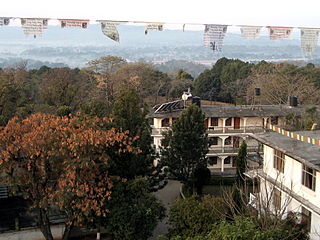
Lobsang Gyatso (1928–1997) was a Tibetan monk who founded the Institute of Buddhist Dialectics in Delhi, India.

Kyabje Yongzin Ling Rinpoche is a Tibetan tulku. The best-known incarnation is the sixth incarnation, Thupten Lungtok Namgyal Thinley, a Tibetan buddhist scholar and teacher.
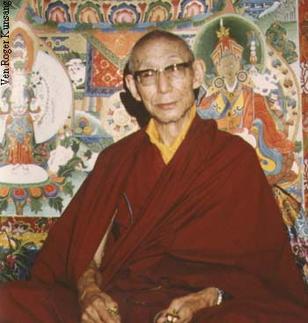
The Third Trijang Rinpoche, Lobsang Yeshe Tenzin Gyatso (1901–1981) was a Gelugpa Lama and a direct disciple of Pabongkhapa Déchen Nyingpo. He succeeded Ling Rinpoche as the junior tutor of the 14th Dalai Lama when the Dalai Lama was nineteen years old. He was also a lama of many Gelug lamas who taught in the West including Zong Rinpoche, Geshe Rabten, Lama Yeshe, Kelsang Gyatso, and Lama Zopa Rinpoche. Trijang Rinpoche's oral teachings were recorded by Zimey Rinpoche in a book called the Yellow Book.

Men-Tsee-Khang, also known as Tibetan Medical and Astro Institute, is a charitable institution headquartered in Dharamshala, Himachal Pradesh, India. The institute was founded by the 13th Dalai Lama, in Lhasa in 1916. In the aftermath of the Chinese occupation of Tibet, the 14th Dalai Lama came to India where he re-established the institution in 1961 with the following missions:

Khyongla Rato, pronounced "Chungla," was also known as Khyongla Rato Rinpoche, Rato Khyongla Rinpoche, Khyongla Rinpoche, Ngawang Lobsang Shedrub Tenpai Dronme, and Nawang Losang, his monk's name. Born in Dagyab county in Kham province in southeastern Tibet, he was recognized as an incarnate lama at an early age. He spent over 30 years receiving teachings and studying as a highly trained monk in the Tibetan Buddhist monasteries of Tibet. A respected scholar, he was a debate partner of the 14th Dalai Lama at his Geshe examination in Lhasa, Tibet. He founded the Tibet Center in New York City. The center co-sponsored many of the Dalai Lama's teachings in New York City.
Tsewang Dolkar Khangkar is a doctor of traditional Tibetan medicine, currently exiled in India.

Tashi Tsering also called Tashi Tsering Josayma; born in 1960, is a Tibetan tibetologist, historian and writer.
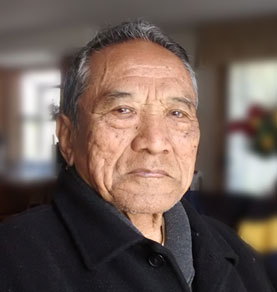
Losang Thonden was a Tibetan government official, scholar, calligrapher, and author.

Tibet Center Institute – International Institute of Higher Tibetan Studies was founded by the 14th Dalai Lama, Lama Geshe Tenzin Dhargye and the Tibet Office Geneva with the support of the Carinthian state government and is located in Knappenberg in the region of Hüttenberg, Carinthia, Austria. The institute provides an authentic and secular education program on Tibet's authentic knowledge and culture on an academic level which makes it unique in Europe.
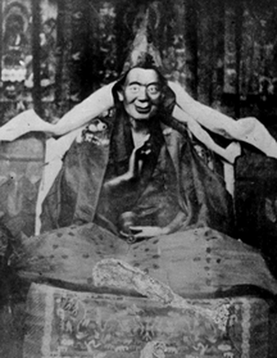
Domo Geshe Rinpoche is said to have been Shariputra, the Mahadsiddha Gayadhara, Dharmashri, Munijnana, Tönmi Sambhota, King Trisong Detsen, Dromtönpa, Milarepa, Khedrup Rinpoche, and Dragpa Gyaltsen in previous lives.
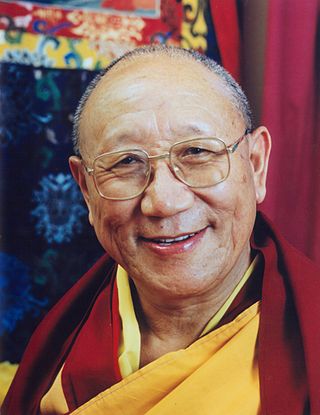
Kyabje Khensur Kangurwa Lobsang Thubten Rinpoche, was a Buddhist monk, Abbot of Sera Jey Monastery, and the founder of Tibetan Buddhist Institute (Adelaide). Khensur means "former abbot" and Rinpoche means "precious teacher."
103rd Ganden Tripa Jetsun Lobsang Tenzin Rinpoche was the 103rd Ganden Tripa of the Gelug school of Tibetan Buddhism. He was appointed to the position by the Dalai Lama in 2016 and died in 2017.

Yeshi Dhonden was a Tibetan doctor of traditional Tibetan medicine, and served the 14th Dalai Lama from 1961 to 1980. In 2018, the Indian government honoured him with the Padma Shri, the fourth highest civilian award in India.
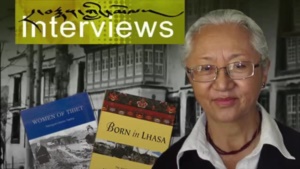
Namgyal Lhamo Taklha is a member of the Tibetan community living in exile. Between 1988 and 1994 she was elected to the Parliament of the Central Tibetan Administration and held the post of Health Secretary in the Central Tibetan Administration Cabinet based in India.
The Tibet Policy Institute (TPI), founded in 2012, is a Tibetan think tank and research-oriented intellectual institute of the Central Tibetan Administration. TPI is based in Dharamshala, Himachal Pradesh, India.














